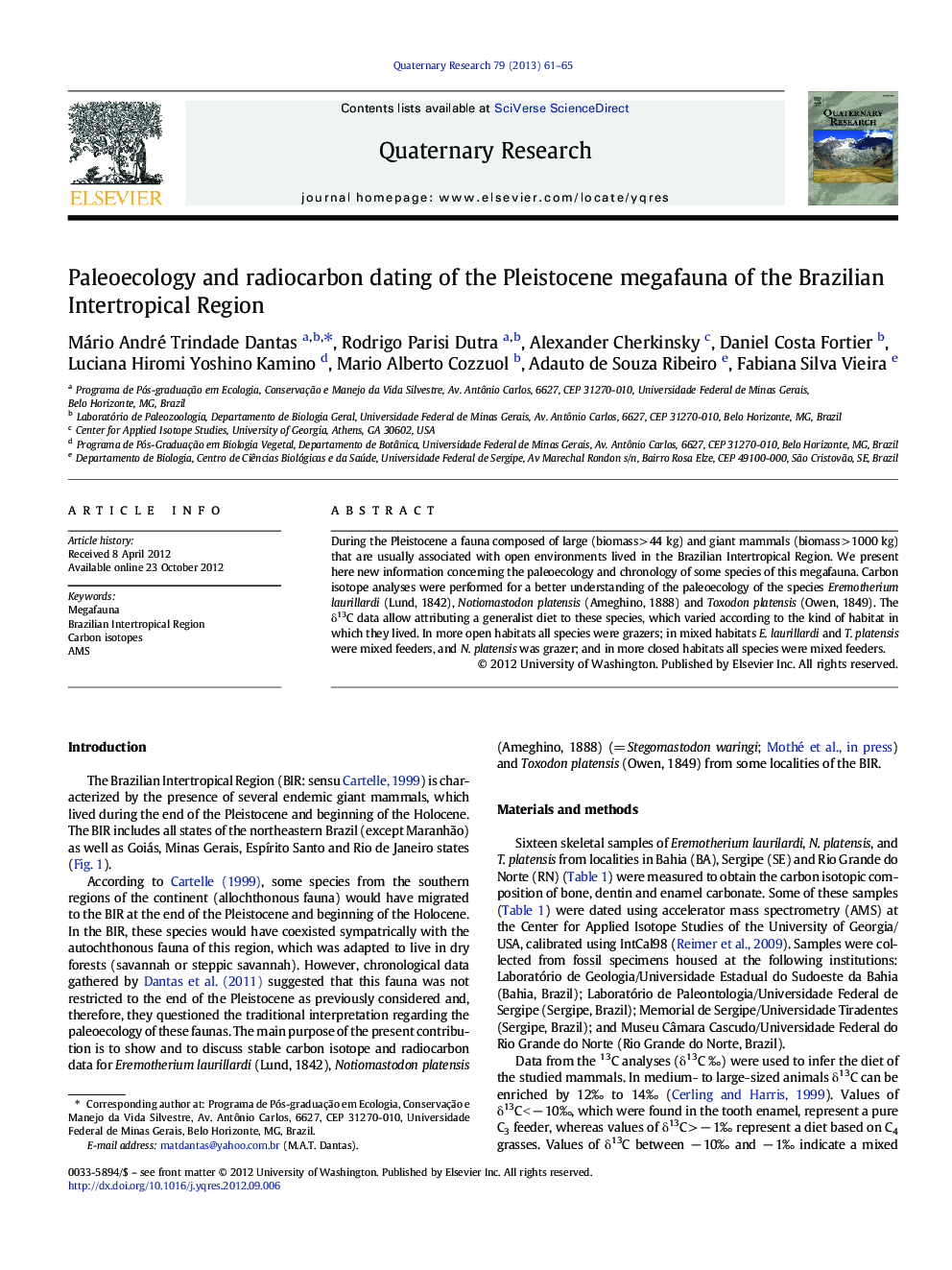| Article ID | Journal | Published Year | Pages | File Type |
|---|---|---|---|---|
| 1045537 | Quaternary Research | 2013 | 5 Pages |
During the Pleistocene a fauna composed of large (biomass > 44 kg) and giant mammals (biomass > 1000 kg) that are usually associated with open environments lived in the Brazilian Intertropical Region. We present here new information concerning the paleoecology and chronology of some species of this megafauna. Carbon isotope analyses were performed for a better understanding of the paleoecology of the species Eremotherium laurillardi (Lund, 1842), Notiomastodon platensis (Ameghino, 1888) and Toxodon platensis (Owen, 1849). The δ13C data allow attributing a generalist diet to these species, which varied according to the kind of habitat in which they lived. In more open habitats all species were grazers; in mixed habitats E. laurillardi and T. platensis were mixed feeders, and N. platensis was grazer; and in more closed habitats all species were mixed feeders.
